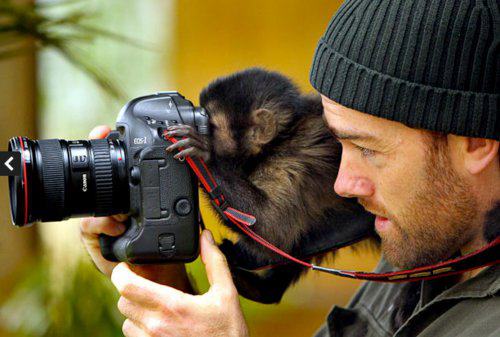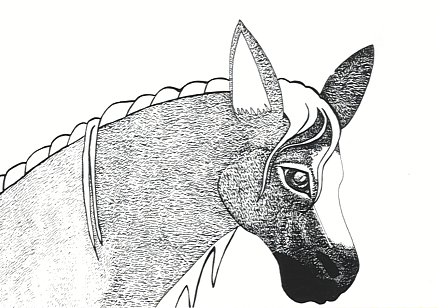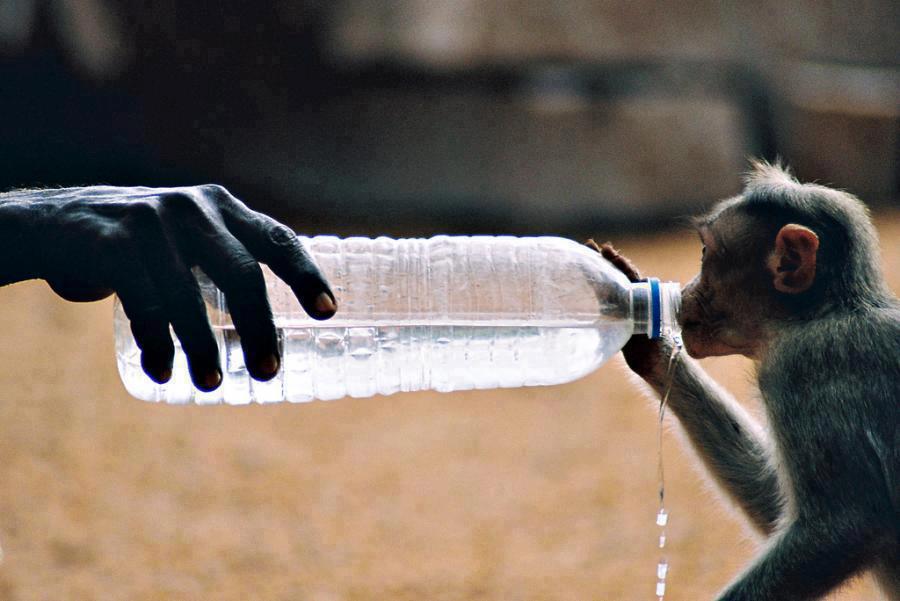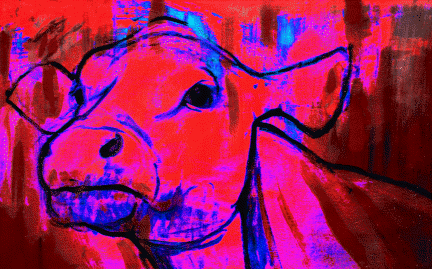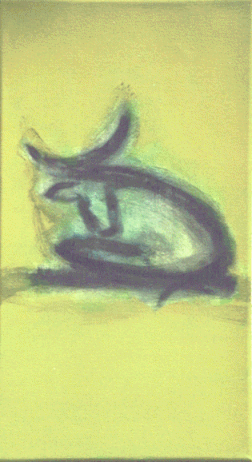
Find more info on: Mithras in the Taunus (Edition Farangis)
This text can be downloaded as a PDF, if you click here: Mithraic backgrounds
Manuchehr Jamali and Gita Yegane Arani-May
Mithraic backgrounds and their Iranian roots:
What’s the symbolism of the bull’s raised tail with the three ears of grain?
Why do ears of grain grow out of the raised bull’s tail?
No bull raises his tail straight up, nor does one or three ears of grain grow at the tip of any bull’s tail. What type of worldview do we see in this symbolism that merges animal with plant life? The image of the “ear of grain” and the early philosophical conceptions tied to this symbol, held a central meaning in the early Iranian civilisation and their religious ideas. A basic concept they held was represented in their equation of growth (as pertaining to plants) and birth (in animal life).
The Persian word Tokhm means “plant seed” and “sperm”. Kashtan, “the sowing out of plants” also means to “impregnate”. The term Tokhm (seed) was equated with the term ‘fire’. Though meant was not the burning fire, rather: the seed would contain a nonburning fire (a warmth = the creative dynamic and Mithra = Love) hidden in its depth inside. ‘Life’ (Djaan = Gi = Gaya = Gi + Yaan) itself was also called Tokhme Atesh = “Fireseed”.
The term waksh “to grow” refers both to the ‘growth’ and to the ‘blazing fire’ both equally. The central deity of the early Iranians was symbolized in the image of an array of flammable cubes (or firelighters), and “the ear of grain” – the image that mainly depicted this deity – was also seen as equal with “fire cubes” in an oven.
***
Each “seed” (the ‘fire-of-life’ of each plant life, animal life and human life: “Atashe Jaan”) holds within itself a hidden fire, through which a drive to raise itself and the desire to give itself an outer appearance and shape is triggered – from the darkness within to the outer visibility.
Each seed that falls down onto the soil raises itself, pushes upwards by a means of such a “wind” (air = breath = fire-creating-agent = ‘that, what sets something ablaze’ = Azar Forouz) of a motivated movement and lifts and raises itself (it thus “becomes”). Something “is” when it raises itself. The hidden fire-of-life itself though, comes into being through the wind = Waaz = Waay.
***
The Iranian deity had also carried the title Waaye beh = “good wind” and Naaye beh = “good flute”. The good flute is the source of the wind of life, the breath of life and the fire of life. The good wind, which is at the same time a melody or music, was identified with the good flute, which again also carried the title of “the virgin”.
Trumpets and the other big musical wind instruments which were used by the ancient Iranians when they went to war, were called Gaw dum = “cow’s tail”. A good horse was also called a “bamboo-“ or “reed’s-“ tail (Khayzaran dum = literally “bamboo tail”).
The horse, Asb in Persian, is called Bad-e Djaan = “wind of life” in the classical Iranian literature. Bad is the wind = Waay, and Waay again is the “Naaye Be” (the good flute). The term Bad-e Djaan discloses the relation of the “bamboo tail” with a creative feature: the wind, Bad, is “Waaye Be” and at the same time its also the title of the Iranian deitiy. The tail stood for the place of resurrection (the re-creation).
But what does the tail of a cattle has to do with a trumpet? The word Dum = “tail” did not only mean “end” in the sense of a point closing or that it ends something, it also meant the location where a re-surrection or re-creation takes place. Dombale means both “tail” and also, “dombale chizi raftan” means to pursue something. The word dombale also means ‘continuation’ in the sense of a spearhead.
The feathers of the peacock were walled Dume Tavoos = “tail of the peacock”. The peacock was considered to be the bird of resurrection and renewal (Frash-Murw) because of his colourful tail.
In the Persian language wheat is called Gan-Dum = Gund-Dum which means as much as “life at its tail” oder “ear (Gund) at its tip” and it stood as a symbol of resurrection. Since often there is a bunch of hair at the end of an animal’s tail and since a bird’s tail has a fan of feathers and since hair held a special and important meaning in this ancient world view, we can understand this type of equation so far.
In the Pahlavi texts hair is often identified with plants, but “hair” (Muy = Mu = Giss) originally carried the connotation of “flute” in the Persian language. The word “music” itself, that consists of the morphemes Mu-Se (Muse = Musi) means “three flutes” = “flute” – from this context an explanation can be seen as of how the word “music” originated.
***
The bird (Mare-gha = Tan-guria) stands as the embodiment of the source of the worlds (self-) renewal, and the earth goddess herself, who is called Gawe Barmaye (cow of Barmayun) in the Shahnameh myth, is there described as the one “with a (male) peacocks hair as her tail”.
The tail was also depicted as fire, as a flame and as an ear of grain. The word Dum = “tail” does mean in Persian also fire and flame.
***
The ear of grain, which consists of connected grains or seeds, has also been equated with lightable fire cubes in the Iranian mythology. The deity who is the source of all being (existence) and who is the first element of all life = Artha, is the goddess of fire and seeds (“fireseeds”). All primordial elements of living existence are understood as fireseeds, through an understood equation of “fire” and “seed”. So the ear of grain was depicted as a flame or as a burning torch. The word Soak, that also means ear of wheat, does similarly carry the meaning ”fireflame”.
Within this context we can also find the reason why Cautes = Rashn, and Cautopates = Suroush – Rashn and Soroush mythologically parallel the figures of Cautes and Cautopates in mithraism in their role and function – carry a torch in their hand, and why Soroush (Cautopates) in the Shahnameh epic has hair that grows so long that it reaches down to the ground. The hair on the head where equated with the symbol of three ears of grain.
Soroush and Rashn were both fire-lighteners, they where those who would set the fire ablaze. The lighting of the fire represented the rebirth and the newly created (German: Neuschöpfung). The term of “lighting a fire” (Azar Forouz) meant “bringing something into life” and “rebirth”.
Soroush, Rashn and Artha were for this reason all called with the attribute name Kavat: the one, who opens something anew”. The goddess Artha had been called Kavat in the Region of Sijistan (Sistan). In Persian literature Kavat is the “doorsill”. The deity Artha is being symbolized by the 1. month of the year (Farvardin). She opens the year. The doorsill (Kavat) represents the idea of the initiation and opening of that what is new. Cautes and Cautopates open the gate to the day, they stand for the sill between night and day.
Rashn and Soroush carry like midwifes the Sunseeds, which cyclically comes into being at every midnight, and they help this seedling to be born. Cautes (Caut-es) is similar to the word Kavat, which, as we already mentioned, means the one who starts, who creates new, opens something anew and threshhold. Cautopates (Caut-o-pat-es) means the partner (the other half of a pair or twin) and he is the coworker of Cautes. These two have the task of bringing about the rebirth or the resurrection (Frashgart = the ‘becoming afresh’). In a relief from Carnuntum (Austria) Cautes is depicted with a raised torch (flame) in his right hand and an ear of grain in his left.
The Iranian deity was called Arta-Xusht, “Artha the ear”
The central deity in ancient Iran was depicted as an ear of grain. Her seeds or fireseeds (Artha = Axv = Praan = Fran) were the first elements of all life on earth. These fireseeds are in every body (Tan, which also means womb and fireplace or oven) safely kept and one, with the body itself. This was seen as the love (Mithras = Maetha) and unification of the divine being with the worldly matter.
The creation (A-fri-dan) was a turning-into-all-that-lives (fri = love) and a binding-with-everything. Maetha, from which the word Mithra later derived, meant 1. pair and 2. unification.
This deity was also called Artha-vahisht, And-o-hesht and Artkusht. And means “seed” in Sanskrit. Artha and Ard were the “primordial element” of all that lives, all living entities. The word heshtan (va-hesthan) and vaheshtan meant “planting the seeds into the soil” or also the sexual conception in the womb. The term Va-hisht is translated as “the best” by the Zoroastrians and understood as “yonder paradise”. Behesht, which has an equal meaning as the word Vahisht, means in Persian until today “paradise”.
The image or the concept of the “ear” (of grain) stood on one hand for 1. the connection and the unification of all existence (of all being), and of all that lives (love), and 2. on the other hand it stood for the richness in all the existent variations, in all manifoldness, in the distinctness of things. The image of the ear of grain does not depict the repetition of similar parts; the grains, that are the seeds, were seen as the very first element of all the different, separate, diverse, heterogeneous beings.
The ear didn’t have any identical grains, but was the initial point for diversity. The deity was the origin of all differences and all colours. The seeds of the god (Artha) turned or morphed in the process of creation into all the manifold forms and revealed itself in diverseness. The initial condition (Tokhm means in its form “Tum” also “darkness”) itself though stayed dark, ungraspable and invisible. That means that when the deity became visible, it only became visible in plurality or manifoldness. Her invisibleness was the condition of the darkness. Such an “ear” (of grain) this god had been.
***
The quality of the being (German: Wesen) or nature of this deity, which laid equally in each of her seeds, consisted of the compound of two principles or powers, energies. The image of the god or its concept was therefore also called “Hu-vis = good two-ness (however, not a duality in the sense of a dichotomy)”.
On one hand the deity was an ear of grain (as in the image of the connected seed “the compounded fire”) and on the other hand she was the water of life (all liquids, the essence of the plants and the blood or the milk of the nonhuman animals and humans, were called “water” = Ape = Awe). Because of the interconnected or compounded ‘two-ness’ the nature of the deity was understood as a trinity that was depicted in different forms like the threefoiledness, the threeseededness, the thee-eyedness, the three-feetedness, consisting of three ears of grain, three flutes, etc.
The sort of a bondedness (German: Gebundenheit) of two feet or of a pair of wings or also that of how water and seed or the body and the fire of life are connected, was a binding through an “invisible third”. This form of a bond was that, what was understood as “Mithras”, Maetha = pair and unification.
The word “ear (of grain)” Xushe (Xushu = Ukushu) means in Sogdian the number six. The contemporary word “six”: Shesh in Persian, sets itself together of She + She = Se + Se = 3 +3. The image and the symbolism of the “Khushe” itself is that of three pairs = 3 x 2. Art-xusht is an ear that carries three pair of seeds. The “ear” (of grain) yet was also equated with the star cluster of the Pleiades, which again were also called “sixling” in Persian.
The reason why Mithras cuts the vein of the primeval bull with a short sword can be explained in the following way: three leafs grow from the blood that streams out of the vein. In the Iranian myth in the book Bundashishn the vein and the blood both (together) are identified with the deity Arthakhusht. This means the veins were identified with this deity and the main artery, that comes from the heart and divides into two parts, was called “Aorta” after her. The deity Artha was also called Urt (Urt-vahisht).
***
The word which later only remained to be Xushe = “ear (of grain)” originally consisted of Axv + she (Axv + 3) and was originally the word Axushe = Ukhushe. This word meant “three primordial seeds”. Axu is the “primordial element of being”. It is the basic element of existence and of life, and it is also the “the state of being itself” (“self”). The suffix She correlates to to “Se”, that is, the number three. Akhushe is the (threefold) primordial element consisting of three parts in the Persian myth – the primordial seed (Axv = Xva = Uva).
The Axv makes up the center of the quintuple substance of life of the human being. The human entity consists of the five elements: 1. Axv + 2. Buy + 3. Urva + 4. Daena + 5. Fravashi, and from the Avx four powers develop (four wings, four leafs).
***
Art-khusht (Artha, the ear) is seen in the sky as the Pleiades, which are called Khushe Parvin, and also Palm, Sheshak, Pirou, etc. in the Persian languages and Sorayya ( = Thriyya = 3) in Arabic. From this ear (the Xushe Parvin = the Pleiades) at the firmament, the six parts of the earthly creation evolve: 1. the cloudy sky, 2. the water, 3 soil, the earth, 4. the flora, 5. the fauna (especially also the Gaospenta = the “beneficent cow”, which is equal in meaning to the “small domestic animals”), and 6. the world of the human beings. It was also for this reason why the Iranians counted six seasons, which corresponded with this evolutionary circle.
The Pleiades were seen as six seedlings or seeds that would come together in a “womb”, which was the half moon. Following the ancient conceptualization, the full moon set itself together from the Pleiades and the half moon. The full moon showed the state of their unification. Pleiades and half moon make up a pair that represented the “seeds and the womb” and they were understood as the creative beginning. From the coming together of these two celestial parts the world was born.
The pairing of the half moon with the Pleiades was called Vinas (Ghunas), which originally meant “love” and stood for the primordial, the initial love. In the Zoroastrian theology the change from the term Vinas to Gonah, the sin, namely the primordial sin, came about. This term also correlates to the Arabic Jonah = sin.
***
The half moon, the celestial womb, played the role of a sort of a garden, since there all seedlings of live would sprout (the primordial cow, that comes into being in the half moon, in the Mithras cult). Then all the seedlings are laid (distributed, sewn, kashtan) into the Tan = the body, namely the bodies of all earthly (sentient) living beings and plant bodies. The body is equal in its meaning and function with the “womb”. In the Kurdish language the moon is also called Mang, this is the same name the mythological earth-cow is called. Both, moon and earth-cow stood identically with the “ear (of grain)” (Khushe Parvin, the Pleiades). According to the Zoroastrian text sources, different plants grow from the different organs of the primordial cow.
As we already mentioned the nature of the “Art-khusht” was the connected or bound two-ness. This also implied that the male and the female belonged together (primordial cow = cow and bull) and along with that stood the symbolism of the unification of the seed with the womb. The title for an honorary man was the Khajeh (Khava-ye) over centuries in Persia, and it literally meant hermaphrodite. Also the current day honorific title Djenab has just that meaning. The great Iranian heroes of the Shahnameh: Rostam, was called Tahm-tan (Tokhm-tan = seed-womb), which also entails the meaning hermaphrodite. The compounded two-ness (trinity) had the sense of being the creative agent (of the movement, the light, the measure, the happiness).
***
The difference between the Zoroastrian and the Mithraic primeval bull is the following:
The Zoroastrian primeval bull is fatally injured by Angra Mainyu (Ahriman). The goal of Ahriman is to destroy life on earth. The “Artha”-Seeds though are always victorious (Pirooz), since they have the power to constantly renew themselves on their own. So all efforts by Angra Mainyu are in vain. From all the parts of the cow (which is set as equal with Parvins ear (of grain) / پروين خوشه ), new growth develops from the absorption of the water that runs in the river flowing next to the river Veh Daiti where the bull lies. The primeval bull experiences a new “becoming afresh” = Frashgart.
In Mithraism Mithras is the creator with his dagger, by cutting the vein of the primeval bull. Here the depiction of the river is missing. In place of the process of a resurrection stands the act of the cutting of the live giving veins of the all-live (All-Leben) through the god with his short sword. With the cut in the veins of blood, Mithras effectuates the putative rebirth of live (Frashgart). Water can’t be cut up or dismembered, but the veins, through which the blood is running – the blood which was also understood as a “river” – could be severed.
The vein was identical with the deity Artha. Through the sacrifice the renewal takes place in Mithraism, and with the brutal disconnection of the vein of life, the idea of the contract (Mitre) takes over the place of love (Mehr).
The seeds and the unification of the seeds with the water represented love, the contract though came about through severance.
Copyright © 2012 Edition Farangis. All rights reserved. www.farangis.de
—
The German text is accessible here: http://www.irankulturpolitik.com/die_aehrenkrone.
In this context I would also like to cordially invite you to visit our new 2 sites:
For our English readers: Mithras in the Taunus – Mithras at the Saalburg
and for our German readers: Neu-Mithraismus bei Mithraeum.de


